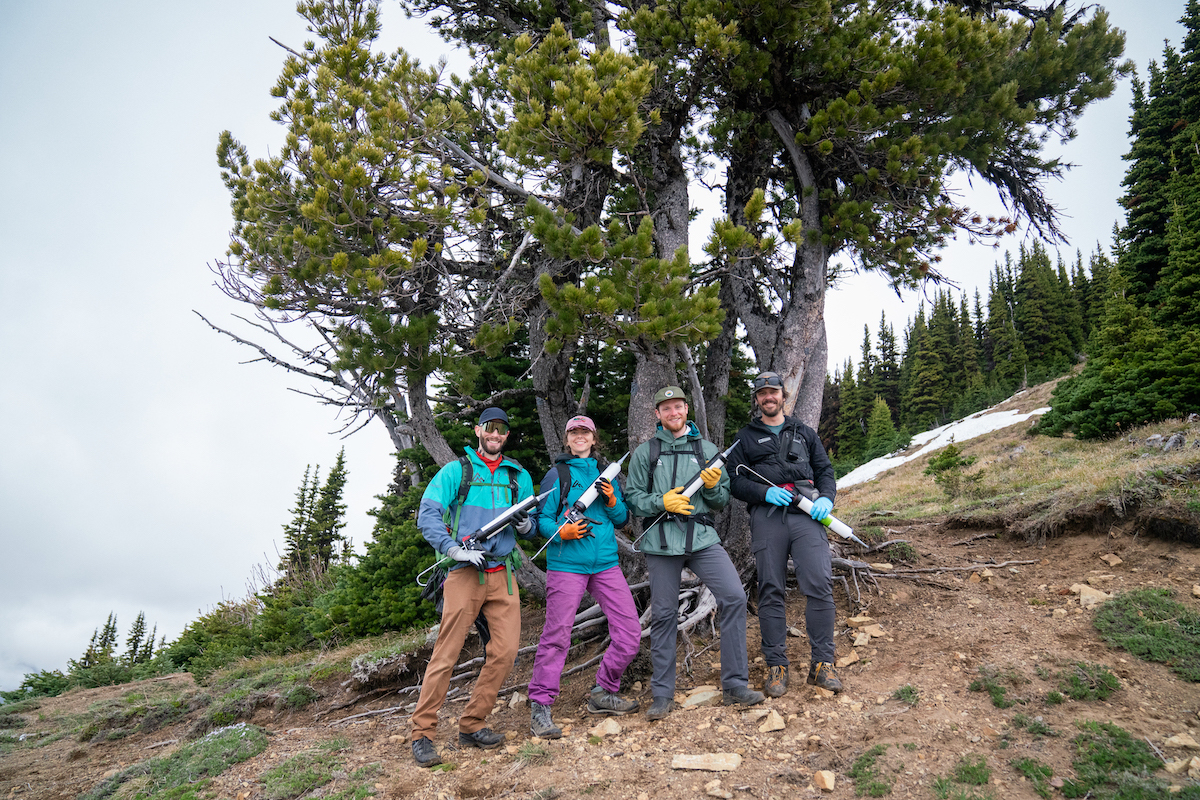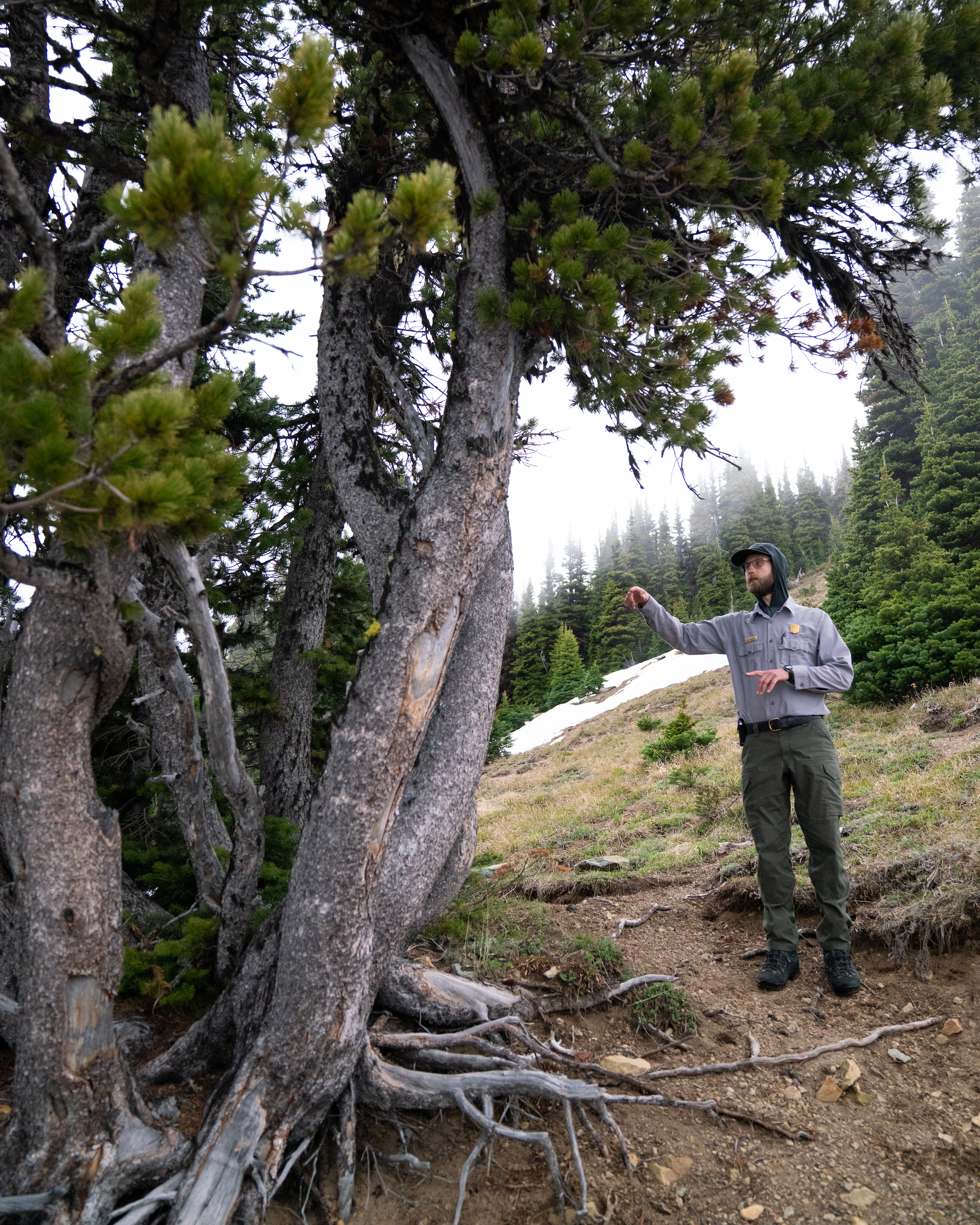Protecting the Whitebark Pine – Crystal Mountain
Written by Caitlin Habenicht
All imagery provided by Rhyan McLaury
A quiet, critical effort to protect a species of imperiled high-alpine trees, the whitebark pine, is underway.
This week, in collaboration with Mount Rainier National Park and the U.S. Forest Service, a team of Crystal Mountain employees began conservation measures to protect the whitebark pine. Overseen by a National Park Service biologist, our team started verbenone treatment (a synthetic pheromone that deters mountain pine beetles by signaling that a tree is already occupied) to protect these endangered pines.
The Whitepark pine is native to the subalpine zone across the western United States. It is under serious threat from multiple stressors, including invasive mountain pine beetles, white pine blister rust, and increasing climate-related impacts, such as drought.

Crystal Mountain’s Team
Using verbenone is a preventative approach. The application only takes a few days with a small crew, but it makes a big difference. In signalling that the tree is already occupied, verbenone is like hiring a personal bodyguard for the trees. The catch? It only lasts one season, so it must be reapplied every year around May or June.

(National Park Service member identifies a whitebark pine in need of treatment)
The National Park Service and U.S. Forest Service have long monitored the health of whitebark pines in the area. Alongside the verbenone treatment, the crew collects GPS location data on treated trees to inform future conservation and restoration efforts.

(Crystal Mountain team member applies treatment to a whitebark pine tree.)
The team plans to return annually in May or June to reapply treatment and continue monitoring. It’s quiet work—often unseen—but essential to the long-term health of the mountain’s ecosystem.
At Crystal, we’re proud to be official partners with the U.S. Forest Service and to support and share this conservation mission. It’s a reminder that the mountain isn’t just a place to play—it’s a living landscape, and we’re all stewards of its future.
Crystal Mountain is a partner in recreation with the U.S. Forest Service.




